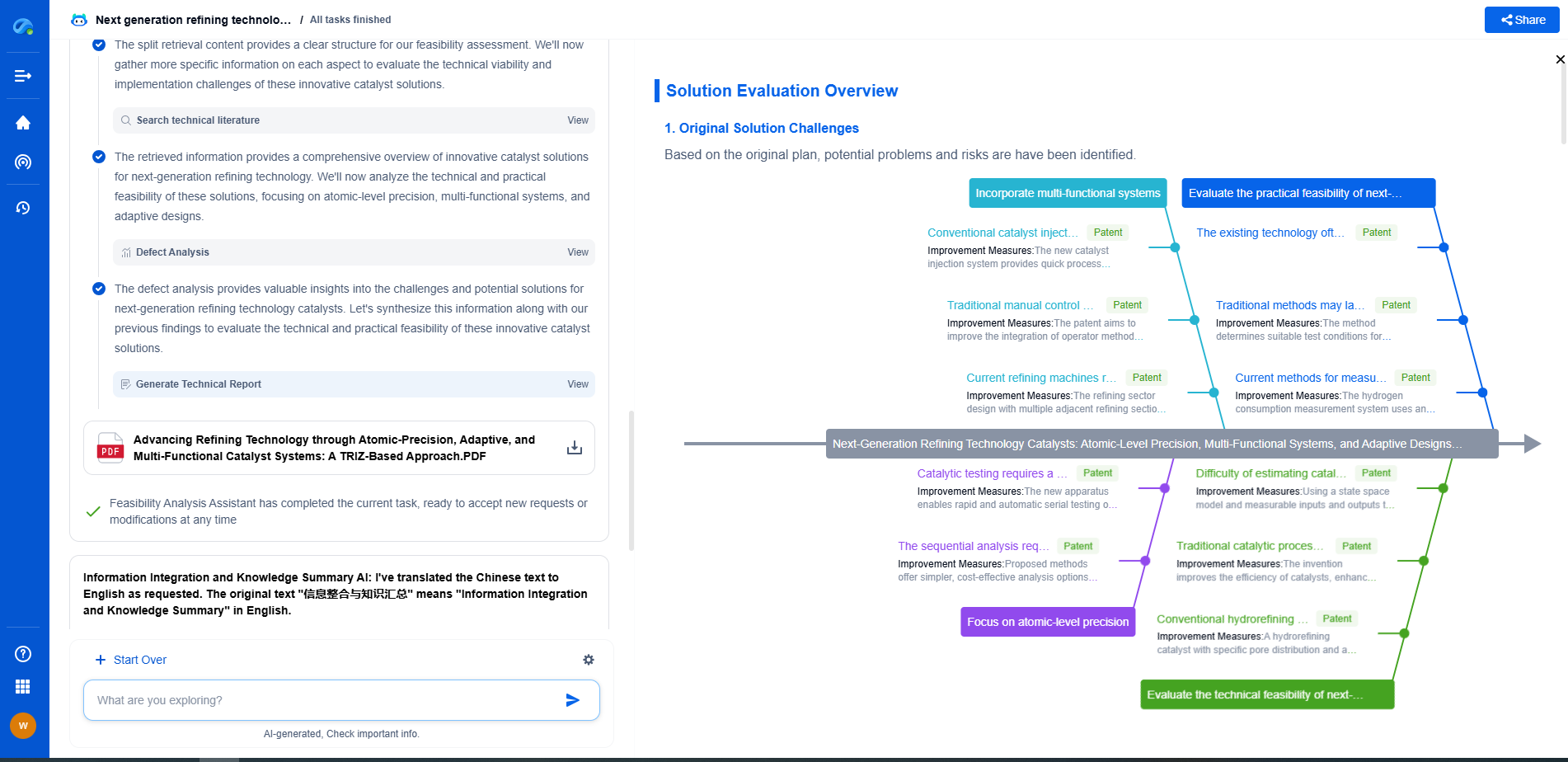What Is Resistance? How It Controls Current Flow
JUN 27, 2025 |
In the world of electrical engineering, resistance is a fundamental concept that plays a crucial role in controlling the flow of current through a circuit. Resistance is the measure of how much an object opposes the passage of electrons, acting as a kind of friction in the realm of electricity. To truly grasp how resistance influences current flow, it's important to delve deeper into its nature, how it works, and its practical implications within electrical systems.
The Nature of Resistance
Resistance is an inherent property of materials, determined by the type of material, its dimensions, and temperature. In simple terms, it reflects how much a material hinders the movement of charge. Materials known as conductors, like copper and aluminum, have low resistance and allow current to flow freely. Insulators, such as rubber and glass, have high resistance, preventing the flow of current. The unit of resistance is the ohm, symbolized by the Greek letter omega (Ω).
Factors Affecting Resistance
Several factors affect the resistance of a material. Firstly, the type of material matters; conductors contain free electrons that move easily, while insulators do not. Secondly, the cross-sectional area of the conductor impacts resistance - a wider conductor allows more current to flow through it, thus reducing resistance. Length is another consideration; longer conductors have more resistance, as electrons encounter more obstacles over a greater distance. Lastly, temperature can also alter resistance; typically, an increase in temperature results in increased resistance due to heightened atomic vibration, which impedes electron flow.
Ohm’s Law: The Relationship Between Voltage, Current, and Resistance
Ohm’s Law is a foundational principle used to explain the relationship between voltage (V), current (I), and resistance (R) in an electrical circuit. Formulated by Georg Simon Ohm, this law states that the current through a conductor between two points is directly proportional to the voltage across the two points, and inversely proportional to the resistance. Mathematically, it is expressed as V = IR. This equation allows engineers and electricians to calculate the current flow in a circuit when the voltage and resistance are known.
Controlling Current Flow with Resistance
Resistance is not merely a passive property; it is deliberately used in designing circuits to control current flow. By including components known as resistors, which are designed to have a specific resistance, engineers can regulate the amount of current reaching different parts of a circuit. This control is crucial for protecting sensitive components from excessive current that could cause damage. For example, in a simple LED circuit, a resistor is placed in series with the LED to limit the current to a safe level, ensuring the diode operates correctly without burning out.
Practical Applications of Resistance
Beyond merely controlling current, resistance has various practical applications that are vital to modern technology. Resistors are used in everything from adjusting volume in audio equipment to controlling the speed of motors in household appliances. Moreover, thermistors, which change resistance with temperature, are employed in systems to monitor and control temperature. These applications highlight how resistance is integrated into our daily lives, often in ways we might not immediately recognize.
The Impact of Resistance on Power Consumption
Resistance also plays a critical role in power consumption within electrical systems. The power dissipated by a resistor is given by the formula P = I²R, where P is the power in watts. This equation shows that as resistance increases, the power loss due to resistance increases exponentially, given a constant current. This relationship underscores the importance of optimizing resistance in circuits to enhance efficiency and reduce unnecessary power loss, which is particularly significant in large-scale energy distribution systems.
Conclusion
In summary, resistance is a key element in understanding and managing electrical circuits. It not only dictates how easily current can flow through a material but also provides a means to control and manipulate that flow to suit various applications. By grasping the principles of resistance, one gains insight into how electrical systems function at a fundamental level, paving the way for innovations in technology and electronics. Whether it's protecting delicate components, regulating power consumption, or controlling devices, resistance is an indispensable tool in the arsenal of electrical engineering.
Empower Your Breakthroughs in Basic Electric Components with Patsnap Eureka
From resistors, capacitors, and inductors to fuses, connectors, superconductors, and nano-scale materials—basic electric elements may be the building blocks of modern electronics, but the innovation behind them is anything but simple. As device miniaturization accelerates and materials science pushes new frontiers, R&D and IP teams face increasing complexity in staying on top of technical advancements, patent activity, and competitive landscapes.
Patsnap Eureka, our intelligent AI assistant built for R&D professionals in high-tech sectors, empowers you with real-time expert-level analysis, technology roadmap exploration, and strategic mapping of core patents—all within a seamless, user-friendly interface.
🔧 Whether you’re optimizing energy storage, improving thermal resistance, or creating the next leap in circuit efficiency, Patsnap Eureka is your AI copilot for high-efficiency, high-precision R&D and IP strategy.
👉 Experience how Patsnap Eureka can revolutionize your R&D and IP strategy. Request a demo today and power up your next breakthrough.
- R&D
- Intellectual Property
- Life Sciences
- Materials
- Tech Scout
- Unparalleled Data Quality
- Higher Quality Content
- 60% Fewer Hallucinations
Browse by: Latest US Patents, China's latest patents, Technical Efficacy Thesaurus, Application Domain, Technology Topic, Popular Technical Reports.
© 2025 PatSnap. All rights reserved.Legal|Privacy policy|Modern Slavery Act Transparency Statement|Sitemap|About US| Contact US: help@patsnap.com

